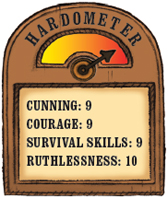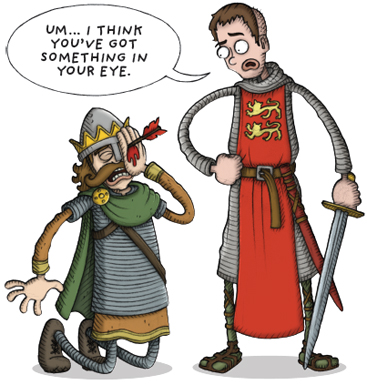

William was a Norman Duke who survived a perilous childhood, then conquered England when he grew up.
YOUNG WILLIAM
William’s father died when William was about seven years old, making him Duke of Normandy. But life wasn’t easy. Three of his guardians and his tutor were killed by rivals who wanted William out of the way, one of them in the room where William was sleeping. Once he’d managed to survive his childhood, he found himself having to deal with rebellions and fighting battles to crush them.
KINGS OF ENGLAND
William was keen for more land. His cousin, Edward the Confessor, King of England, had made him his heir (or so William said). But when Edward died in January 1066, the Saxon Harold Godwinson was crowned King Harold II of England.
INVASION!
William was furious. He gathered a mighty army and built hundreds of ships. The Normans landed at Pevensey on England’s south coast and went on the rampage. Meanwhile, King Harold had to sort out another invasion in the north of England before marching south to meet William. William defeated Harold’s tired army at the long and bloody Battle of Hastings, where Harold was shot through the eye with an arrow and died.

THE BAYEUX TAPESTRY
A strange Norman fashion of the time was to shave the backs of their heads before battle. This hairstyle can be seen in the Bayeux Tapestry, a 70 metre long embroidered record of the Battle of Hastings made in the 1070s.
WILLIAM GETS ANGRY
After the battle, William marched northwards and began a terrible rampage around London, where he was crowned King on Christmas Day in 1066. The English rebelled in different parts of England but William managed to crush them all in the end. The biggest rebellion was in the north of England. William defeated the rebels then took his revenge: his troops killed people and animals and destroyed homes and crops, resulting in a terrible famine.
WILLIAM’S LAST REBELLION
In the end the English rebellions stopped. The Normans took over English lands and Norman castles appeared all over the country. William was injured while destroying a rebellious French town in 1087, and died soon after.
